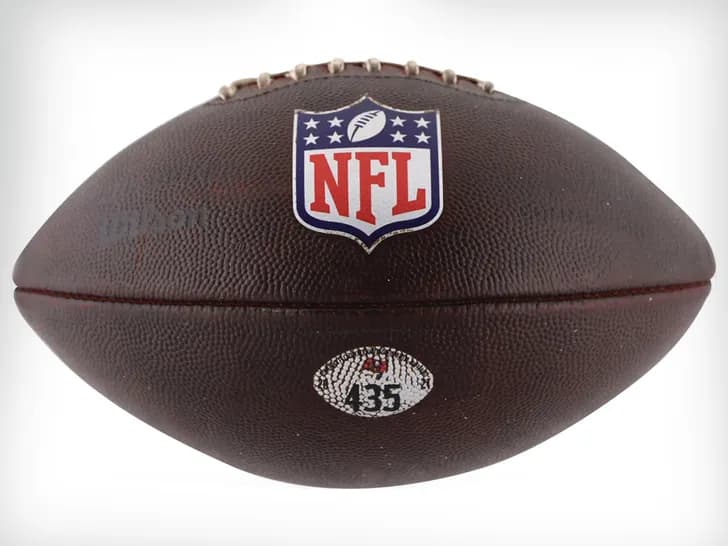Article 2 of the Uniform Commercial Code (the “UCC”) is a statute applicable to contracts for the sale of goods. Article 2 has been adopted as state law in forty-nine of the fifty states, with Louisiana being the only non-adopter (although Louisiana applies similar rules for the formation and enforcement of contracts). Section 2-328 is the only Article 2 provision in which auctions are specifically referenced. Consequently, there has been a fair amount of discussion within the auction community regarding Section 2-328. Unfortunately, the focus on Section 2-328 tends to ignore other provisions of the UCC that are also applicable to the sale of goods at auction. Additionally, it appears that an enduring misperception regarding the purpose and effect of Article 2 has created confusion among some auctioneers. In particular, auctioneers have been advised that Bidder Terms and Conditions (which form a contract between the auctioneer and each bidder and set out the terms of the contract between the seller and the buyer), must strictly conform to Article 2’s statutory provisions at the risk of being unenforceable. In this regard, auctioneers have been told that Bidder Terms and Conditions that are contrary to the provisions of Section 2-328 are neither advisable nor likely to be enforceable. Such advice, however, misses the purpose, intent, and application of Article 2, and is a classic example of the tail wagging the dog.
The purpose of this article is to add some legal perspective to the discussion. It may seem a little esoteric and in the weeds, but putting Article 2 in its proper perspective will facilitate a more meaningful discussion about Bidder Terms and Conditions, and, in particular, about an auctioneer’s ability to use Bidder Terms and Conditions that are reasonably favorable to the auctioneer and the seller, that conform to the individual auctioneer’s practices, and that are appropriate to the asset class and the nature of the sale.
Prior to the adoption of Article 2 (and, before that, the Uniform Sales Act), contracts for the sale of goods were governed exclusively by the common law (i.e., judicial precedent) – and the rules for contract formation, interpretation, and enforcement were fairly formal and rigid. Under the common law, parties to contracts for the sale of goods (particularly in non-auction sales) needed to be very specific. The offer needed to address all pertinent terms including, without being limited to: identification of the goods; price; payment; delivery; title; possession; risk of loss; warranties; disclaimers; and remedies. Then, the acceptance needed to mirror the offer. A problem with the common law rules was that – even though the parties may have desired to form a contract for the sale of goods, the absence any necessary term(s), or some slight difference between the acceptance and the offer, could result in there being no contract. Thus, while the parties had the right to determine the terms to be included in their contracts, the failure to include all essential terms could be fatal to the contract. Additionally, differences in the common law rules from state to state could lead to confusion in transactions where the seller was in one state and the buyer was in another.
This is where UCC Article 2 comes in. Like the Uniform Sales Act before it, Article 2 was designed to establish a set of rules for the sale of goods that was essentially uniform or consistent from state to state. I say essentially uniform or consistent because the states could choose from various alternative provisions in certain sections of the UCC, and the courts in each state still have the ability to interpret statutory and contract language and determine its application in specific cases. Another significant goal of Article 2, like the Uniform Sales Act, was to facilitate the formation of contracts when it was apparent that the parties intended to enter into a contract but failed to satisfy all of the common law requirements. In particular, UCC Section 2-207 is intended to prevent the potentially draconian consequences of the common law as regards contract formalities. Section 2-207 provides, as follows:
§ 2-207. Additional Terms in Acceptance or Confirmation.
(1) A definite and seasonable expression of acceptance or a written confirmation which is sent within a reasonable time operates as an acceptance even though it states terms additional to or different from those offered or agreed upon, unless acceptance is expressly made conditional on assent to the additional or different terms.
(2) The additional terms are to be construed as proposals for addition to the contract. Between merchants such terms become part of the contract unless:
(a) the offer expressly limits acceptance to the terms of the offer;
(b) they materially alter it; or
(c) notification of objection to them has already been given or is given within a reasonable time after notice of them is received.
(3) Conduct by both parties which recognizes the existence of a contract is sufficient to establish a contract for sale although the writings of the parties do not otherwise establish a contract. In such case the terms of the particular contract consist of those terms on which the writings of the parties agree, together with any supplementary terms incorporated under any other provisions of this Act.
Sections 2-207(1) and (2) were designed to address the common law’s mirror-image rule and overcome what had become known as the battle of the forms. Section 2-207(3) addresses gap-filler provisions that fall into place if the parties have not included every essential term in their intended contract.
A critical point to bear in mind regarding UCC Article 2 is that, while the common law required that every essential term be addressed in order for there to be a contract between the seller and the buyer, by operation of Section 2-207(3) and the gap-filler provisions set forth throughout Article 2, so long as an intent to enter into a contract is expressed between the parties, there are only two essential terms that must be agreed to – (i) the identity of the goods and (ii) the quantity. Thus, if parties expressing an intent to enter into a contract for the sale of goods agree on the identity of the goods and the quantity – and nothing else – the gap-filler provisions of Article 2 will provide every other term, including the terms for: payment (Section 2-310); delivery (Section 2-308); passage of title (Section 2-401 and Section 2-328(2)); risk of loss (Section 2-509); and even price (Section 2-305), to mention a few. While the applicability of Article 2’s gap-filler provisions might seem more readily apparent to non-auction transactions, many of those provisions – beyond just Section 2-328 – apply in the auction context, as well.
Section 2-207(3) suggests the proper sequence for interpreting a contract for the sale of goods – first, you start with the terms agreed to by the parties, and, then, you fill in any gaps not specifically addressed by the parties by using the default provisions of Article 2. Thus, only after focusing on the terms expressly agreed to by the parties does the Article 2 – as directed by Section 2-207(3) – turn its attention to the “supplementary terms incorporated under . . . other provisions of [the] Act.” This is where those who derisively dismiss the “infamous gap-filler crowd” (of which I am a member) fail in their analysis. Specifically, the suggestion that you can’t – or shouldn’t – use Bidder Terms or Conditions that diverge in any way from the provisions of Article 2 misses the entire point of Article 2. Thus, starting your contract analysis from the perspective that the provisions of Article 2 are carved in stone, and dictate the terms that must be agreed on between the parties, gets the process backwards. Instead, the analysis of a contract for the sale of goods should start with the terms actually agreed on by the parties, before turning to Article 2 to fill in any gaps. That’s what Article 2 actually requires.
Perhaps the best description of how the gap-filler provisions apply was articulated by the New Jersey Supreme Court in Lott v. Delmar, 2 N.J. 229, 66 A.2d 25 (1949). The Lott case was decided under the Uniform Sales Act (which, as indicated earlier, was the predecessor statute to Article 2 of the UCC), but the principle is the same. In Lott, the court considered the issue of when title passes to goods sold at auction, and focused on a provision of the Uniform Sales Act that was later carried forward into Article 2 of the UCC – “A sale by auction is complete when the auctioneer announces its completion by the fall of the hammer, or in other customary manner.” The Lott court observed that, if the parties had said nothing about the passage of title, then, title (along with the risk of loss) would have passed with the fall of the hammer. However, the Bidder Terms and Conditions actually used in that case called for title (along with the risk of loss) to be retained by the seller until payment was made. Because, in Lott, the property was lost before payment was made, the Bidder Terms and Conditions controlled over the gap-filler provision of the Uniform Sale Act and the loss was realized by the seller, not the buyer. In describing the interplay between Bidder Terms and Conditions and the gap-filler provisions of the statute, the court observed that –
“[T]he Uniform Sales Act is largely declaratory of the common law. Its modifications of the common-law rules were designed to make for uniformity in the law of sales in this country. The act does not deprive parties of the common-law right of contract. The rule of the Uniform Sales Act is presumptive merely, and is therefore applicable only where the parties have not expressly stipulated [otherwise].”
This is wholly consistent with UCC Section 2-207(3) (as described above) and with UCC Section 1-302, which provides that the “effect” of the provisions of the UCC may be varied by agreement.
Here, it is important to spend a moment on the words used in Section 1-302. Section 1-302 does not say that the UCC, including Section 2-328 “can be modified” by agreement, it says that “the effect of provisions of [the Uniform Commercial Code] may be varied by agreement.” This is an important distinction. By way of example –
• If the parties to a contract for the sale of goods say nothing about price, the default provision set forth in UCC Section 2-305 will apply to set “a reasonable price at the time for delivery.” However, if, in the first instance, the parties agree on a price, the effect of Section 2-305 is modified by agreement.
• If the parties to a contract for the sale of goods say nothing about when payment is due, the default provision set forth in UCC Section 2-310(a) will apply and payment will be “due at the time and place at which the buyer is to receive the goods.” However, if, in the first instance, the parties agree on payment terms (i.e., 30, 60, 90, 120 days), the effect of Section 2-310(a) is modified by agreement.
• If an auctioneer’s Bidder Terms and Conditions say nothing about when title passes from the seller to the buyer, the default provision set forth in UCC Section 2-328(2) will apply, and title will pass with the fall of the hammer (even before the buyer pays). However, if, in the first instance, the Bidder Terms and Conditions provide that title only passes when payment is made, the effect of Section 2-328(2) is modified by agreement.
In other words, the agreement of the parties determines the applicability and, thus, the effect, of the Article 2 gap-filler provisions. That is precisely how the court in Lott said it should work. And, that is precisely how Section 2-207(3) says it should work. It’s kind of like going to a wedding – you get the first choice on what you’re going to eat, but, if you don’t check the Vegan box when you RSVP, you’re going to get the steak by default.
Article 2 of the UCC is intended to facilitate the formation of, and performance under, contracts for the sale of goods. Under Article 2, contracts are formed on the terms and conditions agreed to by the parties. If, however, the parties have not addressed every essential term of the contract, the gap-filler provisions drop in to complete the contract. Starting with your own reasonable terms is not contrary to Article 2, it is anticipated by Article 2. In this regard, the courts have consistently recognized both (i) the ability of the auctioneer and seller to establish reasonable terms for the auction, and (ii) the general enforceability of such terms. Terms that do not strictly track the Article 2 default provisions are not – without further analysis – unreasonable, unenforceable, or ill-advised. Absolute statements to the contrary – without considering the specific terms at issue – are inconsistent with both the letter and intent of Article 2, and do not contribute to a meaningful discussion. I am confident that most auctioneers understand customary practices and can identify and implement reasonable Bidder Terms and Conditions. That’s where the discussion should be. Certainly, Article 2 is not the only measuring stick for reasonableness. Conversation stoppers like “you can’t do that because it’s not in the UCC” . . . or . . . “Bidder Terms and Conditions that are inconsistent with the UCC are illegal” . . . or . . . “you have to strictly follow the UCC”. . . all miss the point and suggest that auctioneers must abandon the right to establish their own reasonable contract terms. That’s simply not the case. Of course, specific questions about enforceability and reasonableness should be referred to a competent attorney of your own choosing.
Hopefully, having added some perspective to UCC Article 2 and its application, we can move on to a meaningful discussion of Section 2-328 – which will be the subject of another article for auctioneers to consider.
THIS ARTICLE IS FOR INFORMATION AND DISCUSSION PURPOSES ONLY, AND IS NOT INTENDED AS, AND CANNOT BE RELIED ON AS, LEGAL ADVICE. NO ATTORNEY-CLIENT RELATIONSHIP IS INTENDED OR ESTABLISHED. SPECIFIC QUESTIONS SHOULD BE REFERRED TO AN ATTORNEY OF YOUR OWN CHOOSING.







